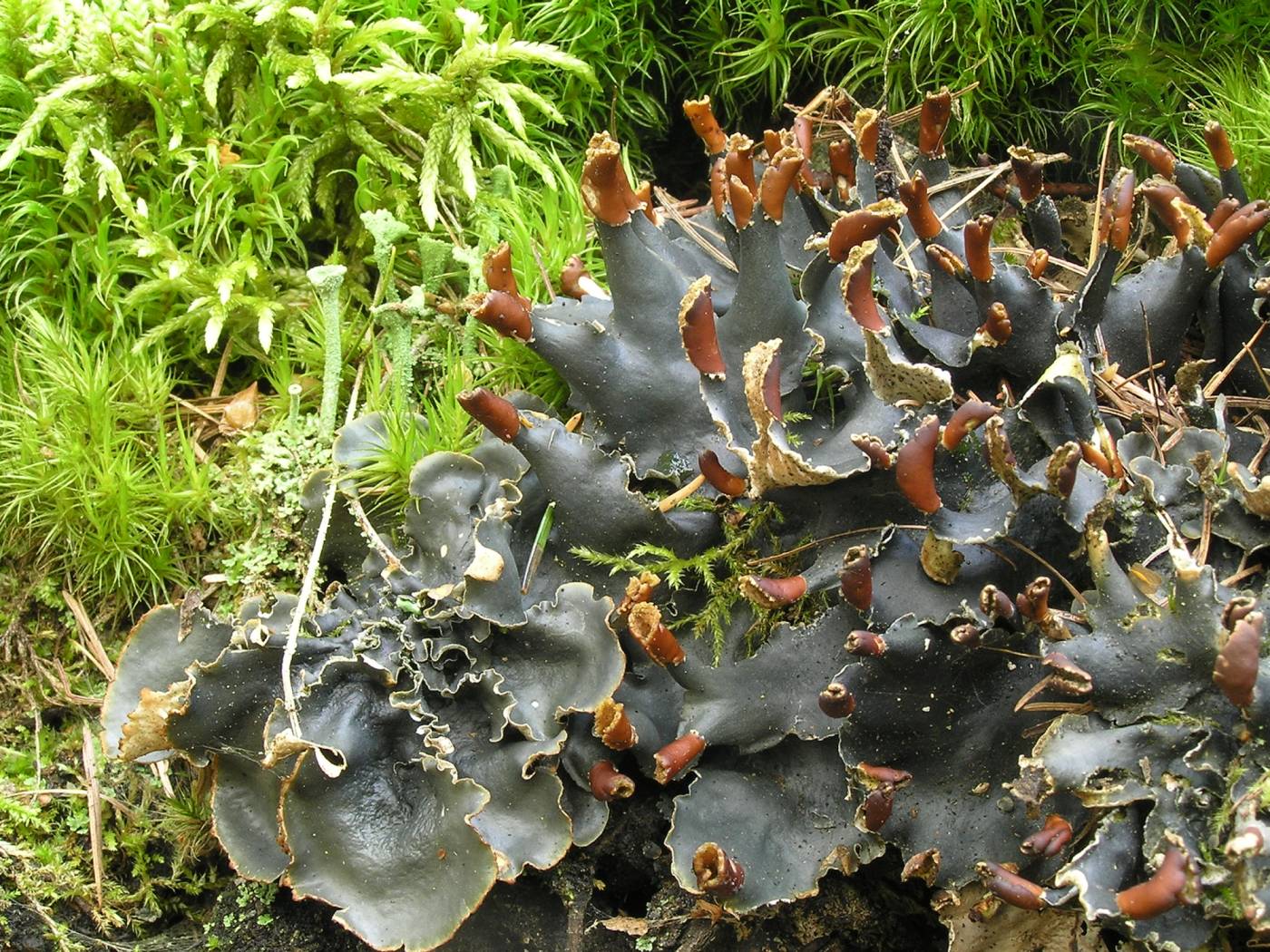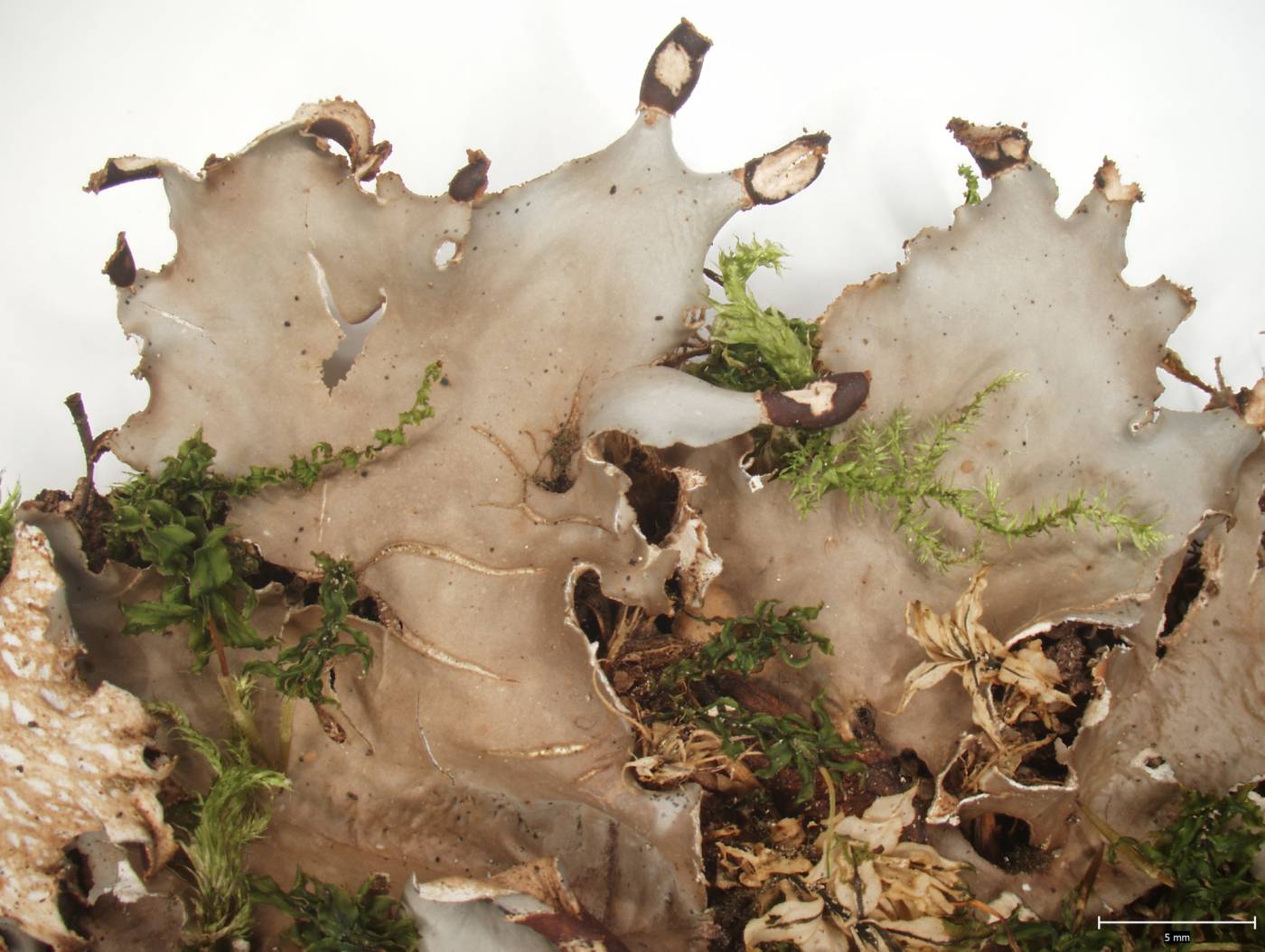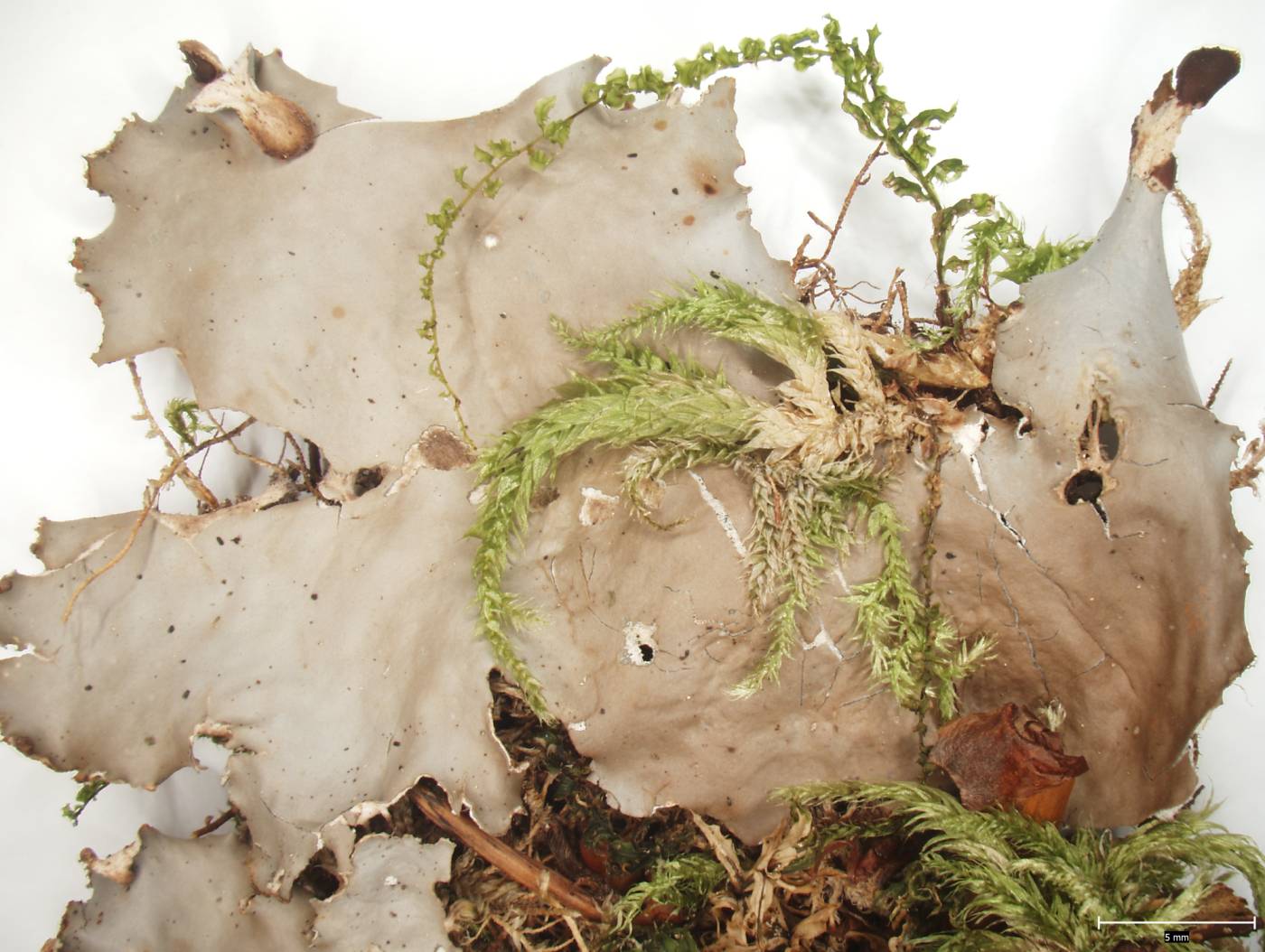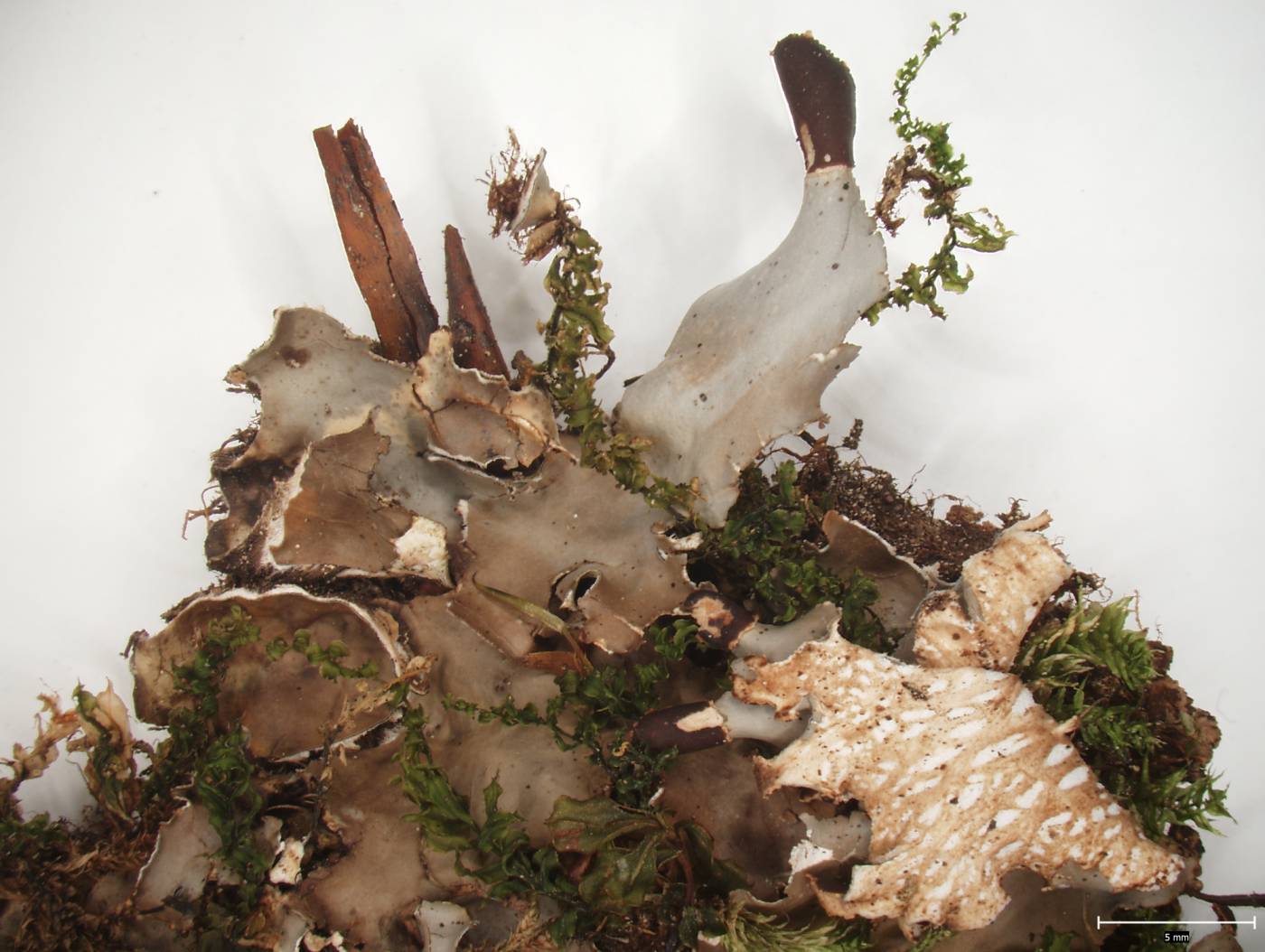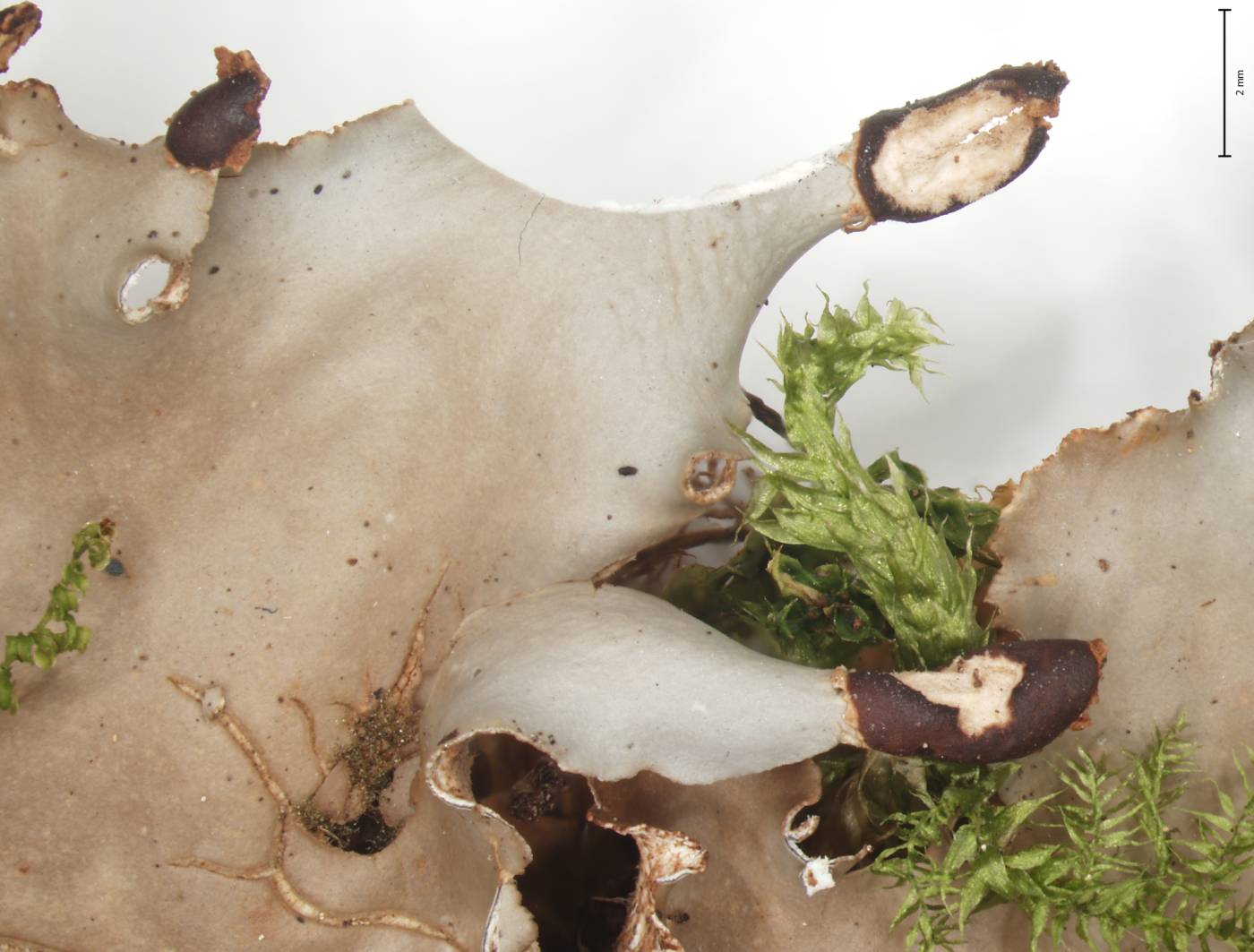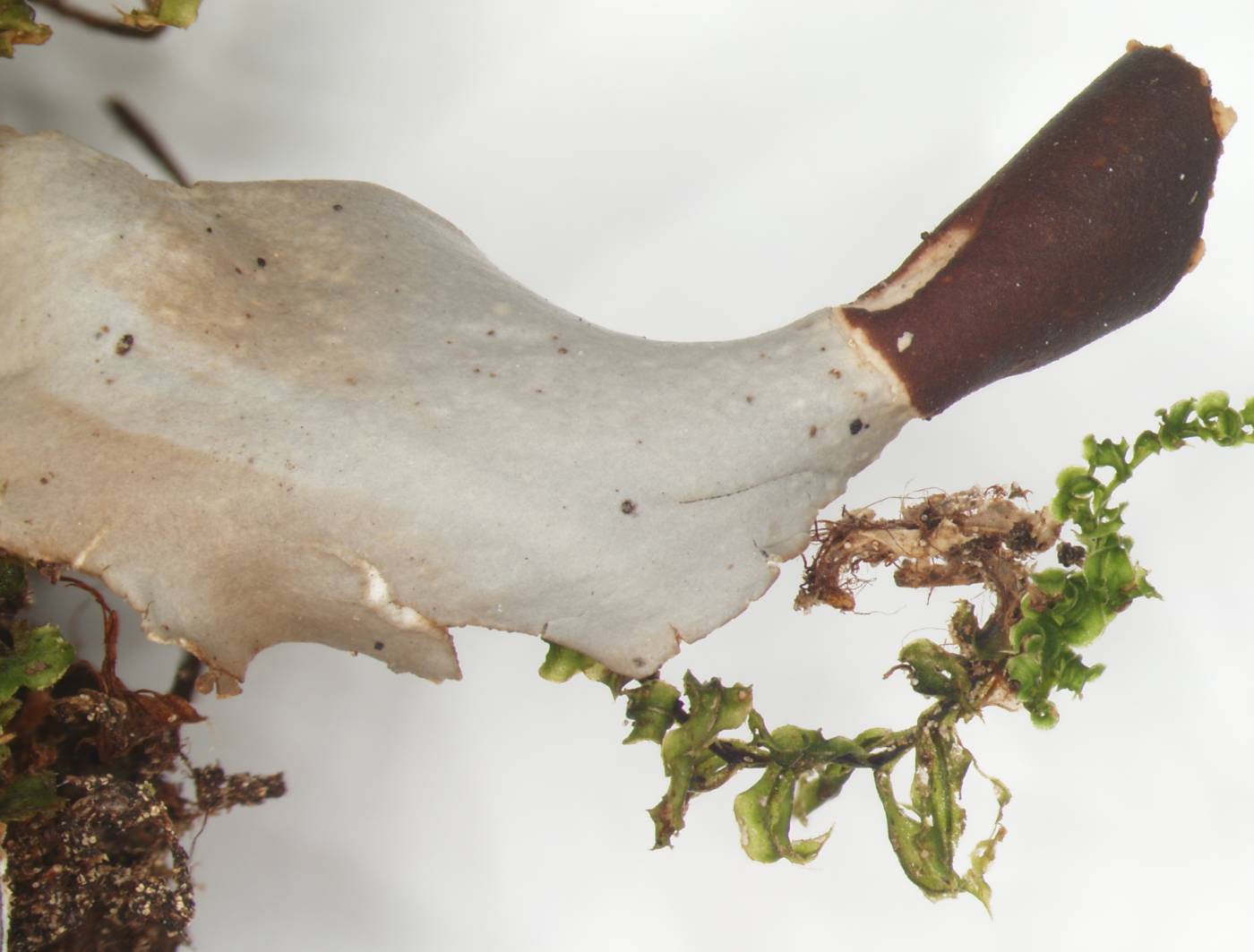This Peltigera is typical by its smooth lobe surface, dark veins and fasciculate rhizines. It may be easily distinguished from the habitually similar P. horizontalis by its “nail-like” apothecia. However, the identification of young or less-developed thalli without fruiting bodies may be problematic. In these cases, TLC may be used since the two species differ in the composition of terpenoids.
Peltigera polydactylon grows on acidic and basic soils, tree bases and mossy rocks in both forest and open habitats. It is widespread in the temperate and boreal zone of the northern hemisphere. In the Czech Republic, the lichen occurs sparsely to rarely at any elevations, but it is almost absent from northern part of the country. Although there are tens of recent records, alike P. horizontalis, the species markedly declined in the last century due to various anthropogenic factors (Liška et al. 2006).
Literature: Liška J., Palice Z., Dětinský R. & Vondrák J. (2006): Changes in distribution of rare and threatened lichens in the Czech Republic II. – In: Lackovičová A., Guttová A., Lisická E. & Lizoň P. [eds], Central European lichens – diversity and threat, p. 241–258, Mycotaxon Ltd., Ithaca.
taxonomic classification:Ascomycota → Lecanoromycetes → Peltigerales → Peltigeraceae → Peltigera
Red List (Liška & Palice 2010):EN – endangered
Red List (Malíček 2023):C3 – endangered
Occurrence in the Czech Republic
All records: 77, confirmed 47. One click on a selected square displays particular record(s), including their source(s).
